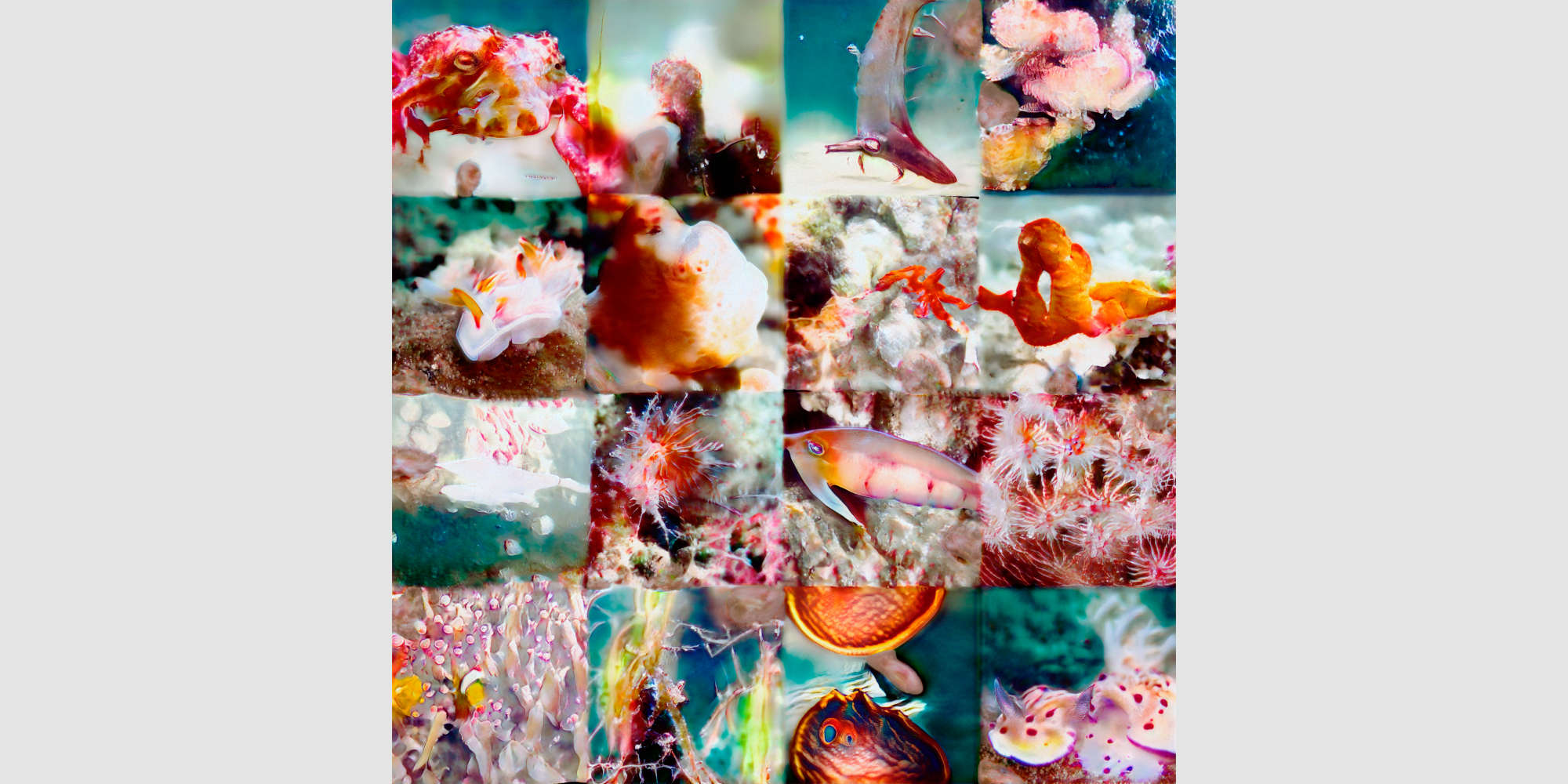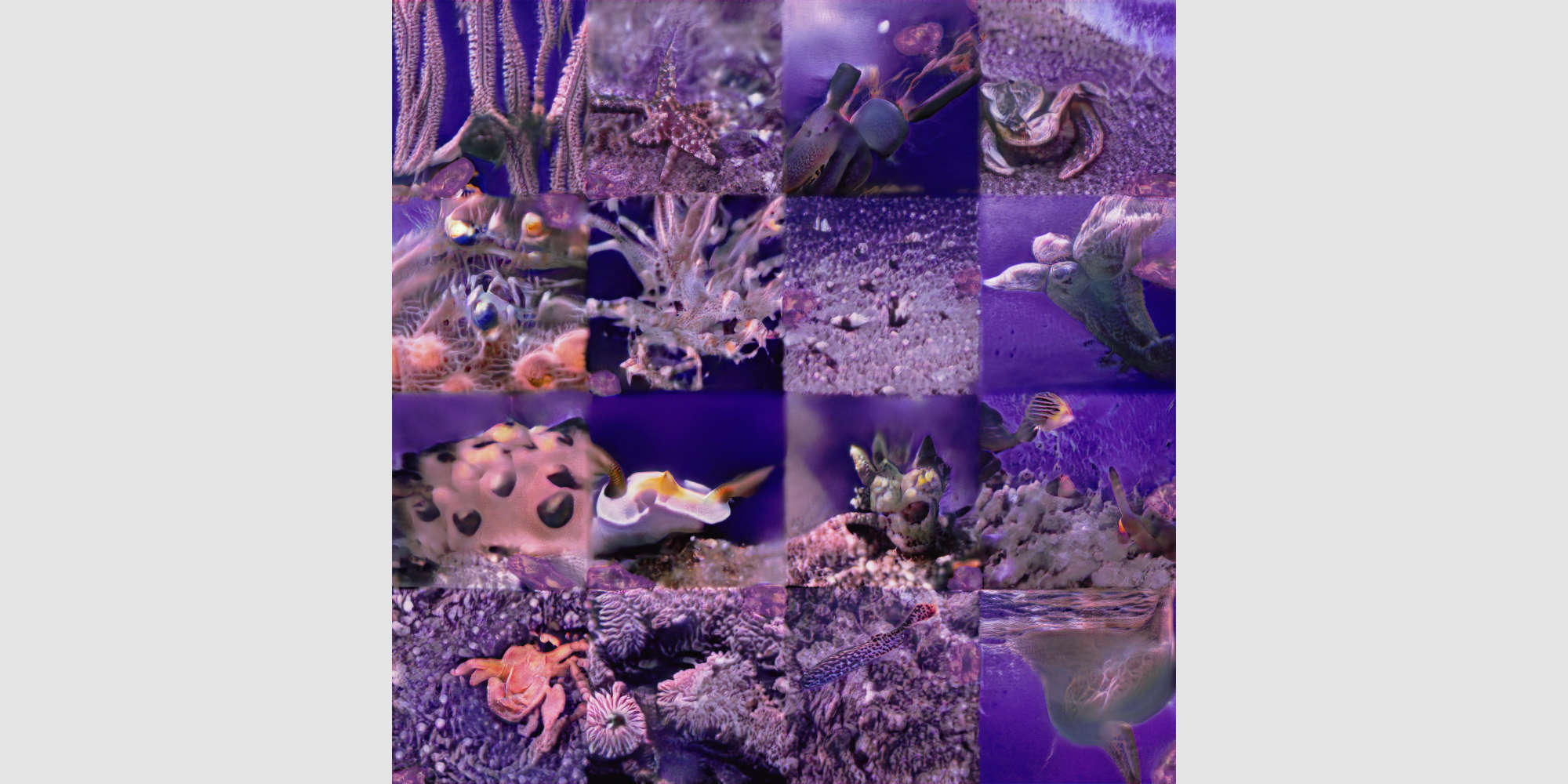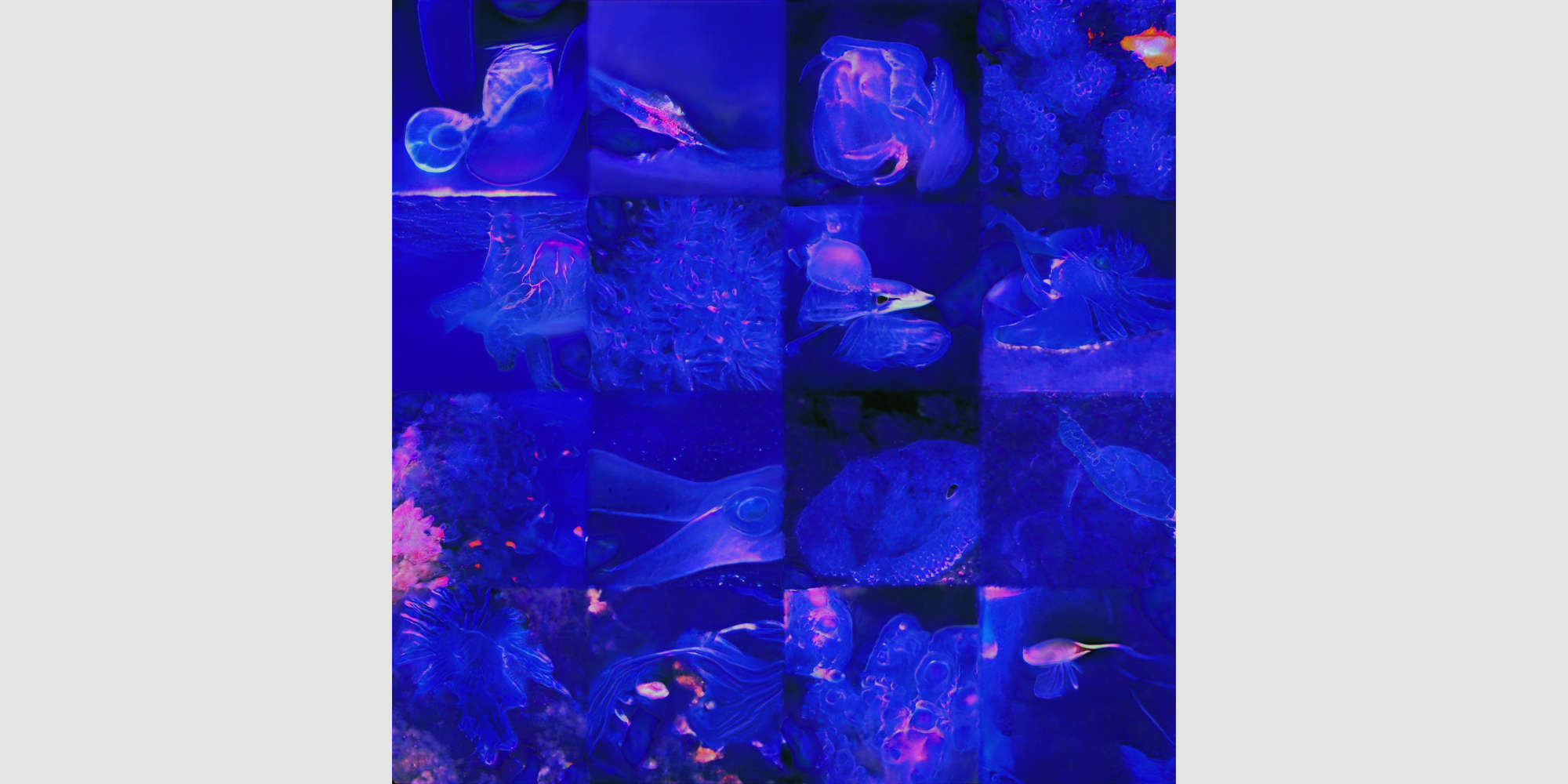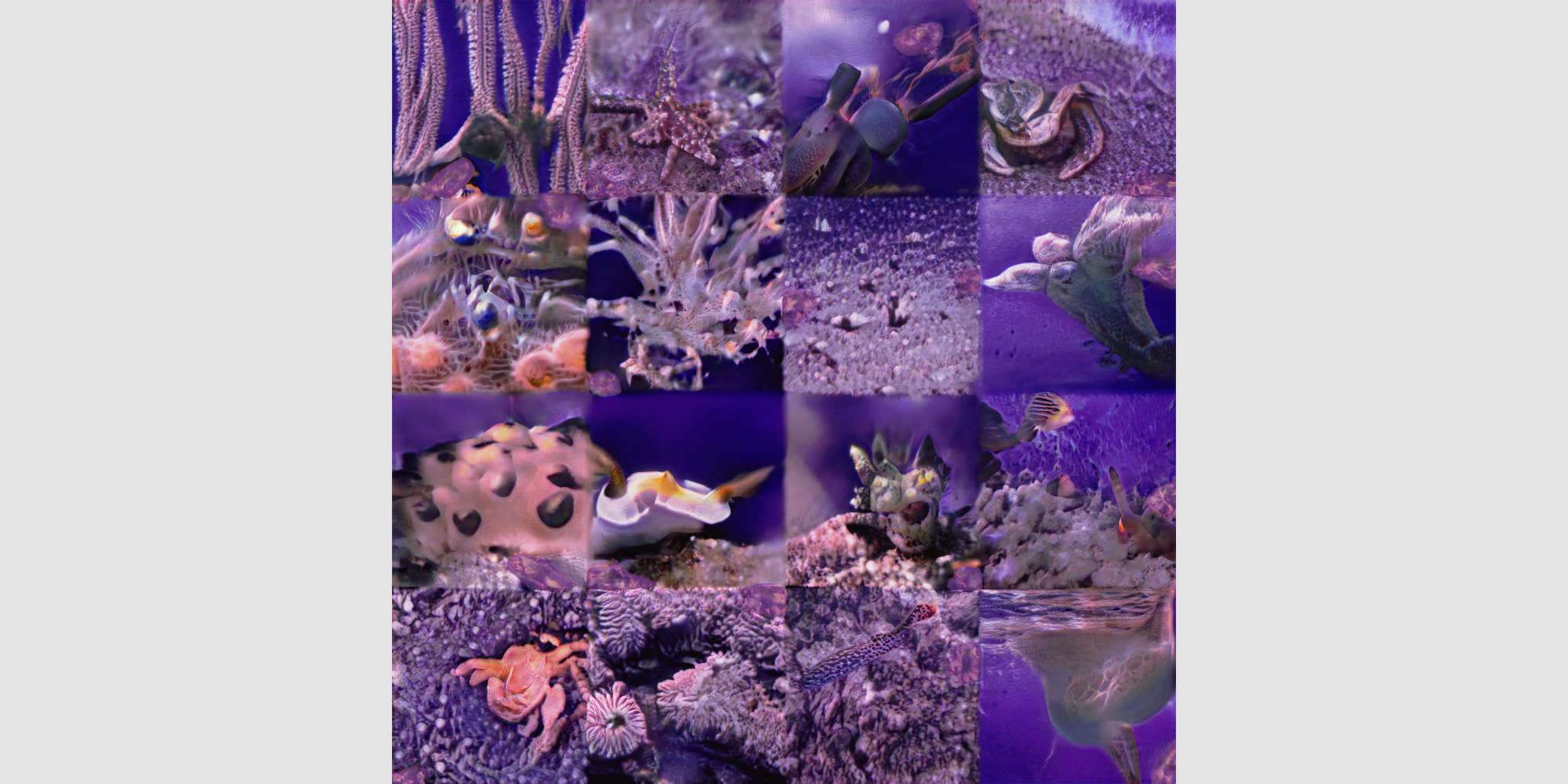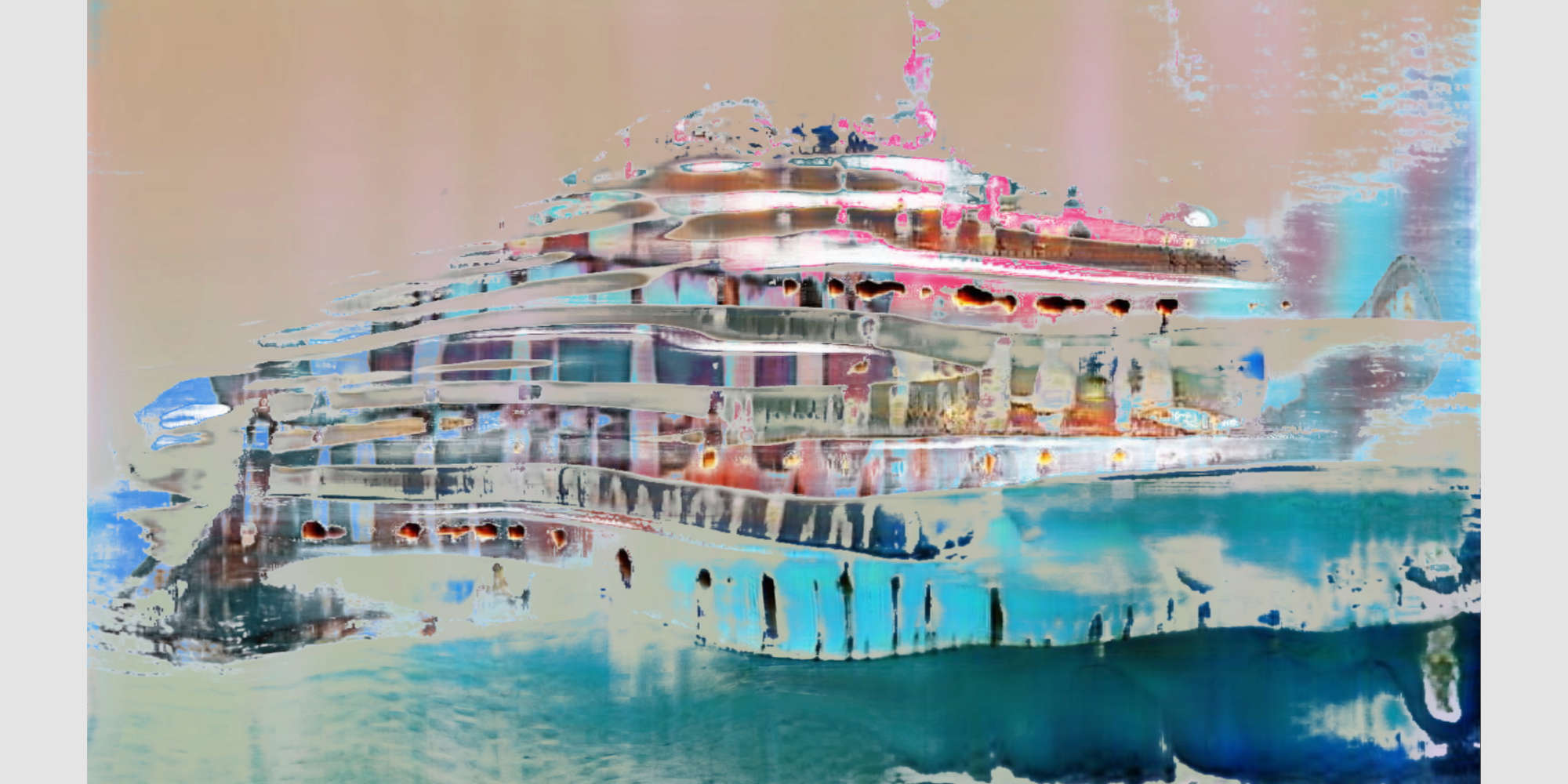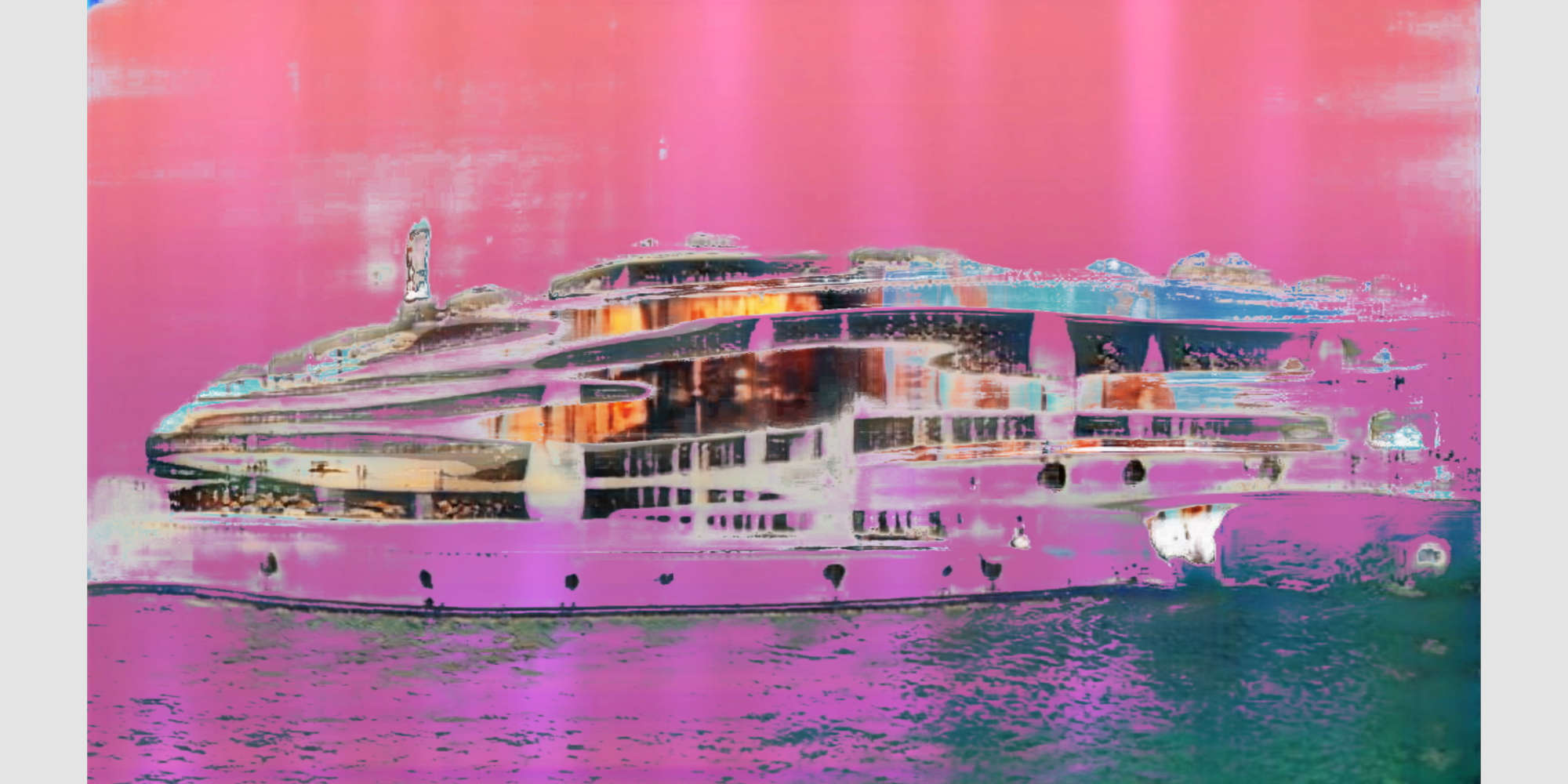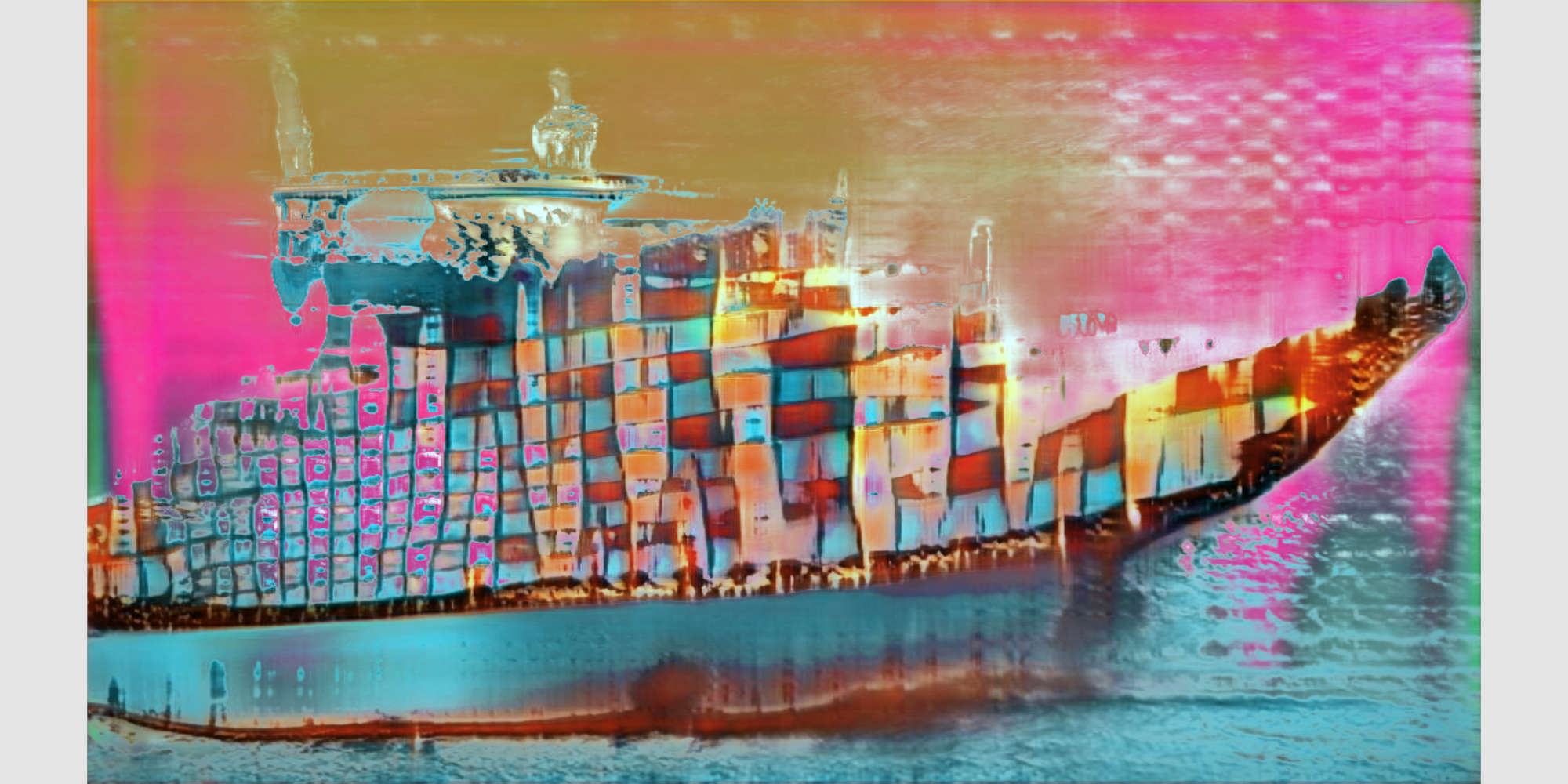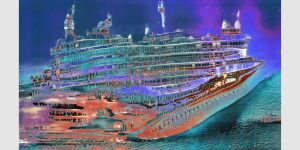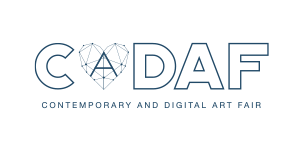The Contemporary and Digital Art Fair is honored to present Anne Spalter and Sofia Crespo, two female artists working with AI technology. Spalter and Crespo explore current socio-economic issues – including COVID19 and ecological uncertainty – in their work. Both artists exhibited their work at CADAF Online, which took place June 25-28, 2020.
Artificial Seascapes reflects on the impact humans and technology have on the environment and explores new ways to visualize it. By incorporating AI, algorithmic tools and data processing into their practice, Spalter and Crespo allow us to see mundane events from a machine’s perspective. By shifting the focal point, scenes that are familiar to the human eye – like images of cruise ships or sea creatures – start to evolve, resulting in unprecedented compositions. The artists invite the viewers to submerge themselves in these new worlds, where beauty and technology collide to expose questions of human perspective, consciousness and preservation.
Video
Timetable
Program
Project Credits / Acknowledgements
Sofia Crespo (DE), Anne Spalter (US)
Curated by CADAF
CADAF
Launched in 2019, CADAF is an art fair dedicated to digital and contemporary art. It supports the expansion of digital and new media art through a dedicated program of art fairs, exhibitions and panel discussions around the world, nurturing and promoting the most exciting talents in cultural innovation.
CADAF provides spaces for participants to discover and connect with the world’s most important artists, galleries, curators and collectors within the digital art market. It is a product of New Art Group LLC, together with New Art Academy, which is committed to education on art and technology.
This program is part of 2020 – finally digital?!
The year 2020 began with a Big Bang, one that demanded the art industry pivot away from its established codes of conduct, immediately, as a matter of sheer survival. From the exchange of courtesies, to remote work structures, and to the reorganization of public and private spaces – old customs required immediate redesign in response to the crisis. As a result, the online space gained even more significance as the only platform for business and commercial transactions, affecting even the art industry and its age-old reliance on in-person interaction. However, across the art industry’s network of galleries, artists, institutions, auction houses, and biennials, the speed of adaptation, the ability to process the ongoing iterations and to find a customized response has varied dramatically.
2020 – finally digital?! is composed of three sections: a conference, invited curatorial projects, and digital gallery showcases. The conference will feature notable members of the art industry and their assessments of the art world’s digitization progress over the past year. The second section invites curators to report back from their communities on emerging positions that are acute right now. The third section amplifies galleries, which are the backbone of the art industry.
Christina Steinbrecher-Pfandt
Blockchain.art
Co-Founder & CEO




